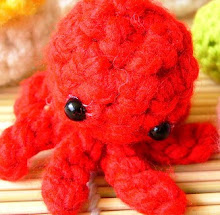Traditional Chinese and Indian medicine has been utilizing green tea for centuries. Practitioners used green tea as a stimulant, a diuretic(to promote the excretion of urine), an astringent (to control bleeding and to help heal wounds), to improve heart health, to treat flatulence(gas), to regulate body temperature and blood sugar, to promote digestion, and to improve the mental processes. Our Western culture has been slow to pick up on this knowledge.
Did you know that
* two cups of black tea contain as much antioxidant as seven glasses of orange juice
and
* green tea has more catechins than black tea (about 25% versus 4%) largely due to the differences in harvesting and processing?
Where does a beginner to the tea world start?
According to the Tea Association of Canada , there are more than 1500 tea varieties available worldwide, however, all teas can be divided into four basic types: black tea, green tea, oolong tea and white tea.
All of these types of tea come from the Camellia sinensis plant, which is a warm weather evergreen. Herbal teas are not a member of this tea family as they are an infusion of herbs and spices, roots, leaves, bark, seeds and flowers of other plants. Herbal infusions are not to be confused with flavored teas which are prepared by adding another plant to actual tea (green, black or white).
The following is a basic summary of the basic tea types:
Black Tea Most popular in North America black tea is made from leaves that are fully oxidized and is most commonly used in tea bags. The brew is amber in color and has a deep rich flavor. Popular black teas include Assam, Ceylon, Darjeeling and Earl Grey and popular blends such as English Breakfast.
Green Tea Most popular in Asia, green tea is withered, immediately steamed to prevent oxidation and then rolled and dried. It has a delicate taste and light green color. Well known varieties of green tea include Dragon Well, Genmaicha, Gunpowder, Gyokuro, Jasmine, Matcha, Sencha Dancha and Tencha.
Oolong Tea Oolong tea is very popular in China. Oolong tea leaves are partly oxidized resulting in a tea that combines the taste and color qualities of black and green tea. Oolong teas are favored for their exceptional flavor and aroma. Some varieties of oolong tea include Formosa Oolong, Pu-erh and Black Dragon.
White Tea White Tea is made entirely from the very young leaf buds that are picked before they are open and are still covered with whitish hairs. The buds are withered, then dried slowly at low temperatures and are not rolled and slightly oxidized like most other teas. White tea has a mild flavor with a natural sweetness. As with all teas, there are many varieties of white tea such as white peony, golden moon, silver needle and white cloud. White teas are produced mostly in China and Japan, but also in the Darjeeling region of India.
How do you know which variety of tea to choose?
Selecting a tea depends on a few different criteria
* cost
* flavor
* antioxidant value
* availability
Tea is grown around the world in thousands of estates or tea gardens which vary in climate and altitude, resulting in thousands of flavorful variations. Like wines, many teas take their names from the district in which they are grown, and each district is known for producing teas with unique flavor and character. White tea is scarcer than most other teas because of the fact that it is made from the bud which is picked before it opens. For this reason it is also a bit more expensive. The oolong tea, popular for its flavor and aroma, also may cost more as this tea undergoes a unique processing which involves a partial oxidation. Green tea, rich in antioxidants, is very light and refreshing and is more readily available. Black tea is the most readily available. If caffeine-free tea is what you are looking for, an herbal tea would be your best choice.
Tea bag or loose leaf, what is the difference?
When making tea bags, whole leaves known as CTC leaves (also known as crush, tear and curl leaves) are chopped, sliced and diced into small particles (ranging from 0.2 to 1.5 millimeters) called fannings and dusts. These particles lose freshness and quality quickly when tea compounds interact with moisture and oxygen. The greater surface to volume ratio causes caffeine to diffuse out quickly. This higher caffeine extraction, together with nutrient loss causes tea bags to taste bitter. When these tea particles are bagged the paper can also be tasted.
A better alternative to tea bags which offer convenience of use without loss of quality is the tea filter bags. The whole leaf tea is simply placed in the disposable bag and the hot water is poured over it into the teapot. The filter bag is usually large enough for the loose leaves to expand. A filter bag can be re-used for the entire day and since a quality tea can be infused 3 times, it is very economical to drink.
This gives a basic summary of what a person should know about tea to help one make informed choices.
Doreen Storozuk is a hairstylist and business owner who has a keen interest in the amazing health benefits of green tea. She enjoys research and writing and invites you to visit her website at http://HealthByGreenTea.com where she promotes green tea in an unbelievable range of products.
Article Source: http://EzineArticles.com/?expert=Doreen_Storozuk
Subscribe to:
Post Comments (Atom)


No comments:
Post a Comment